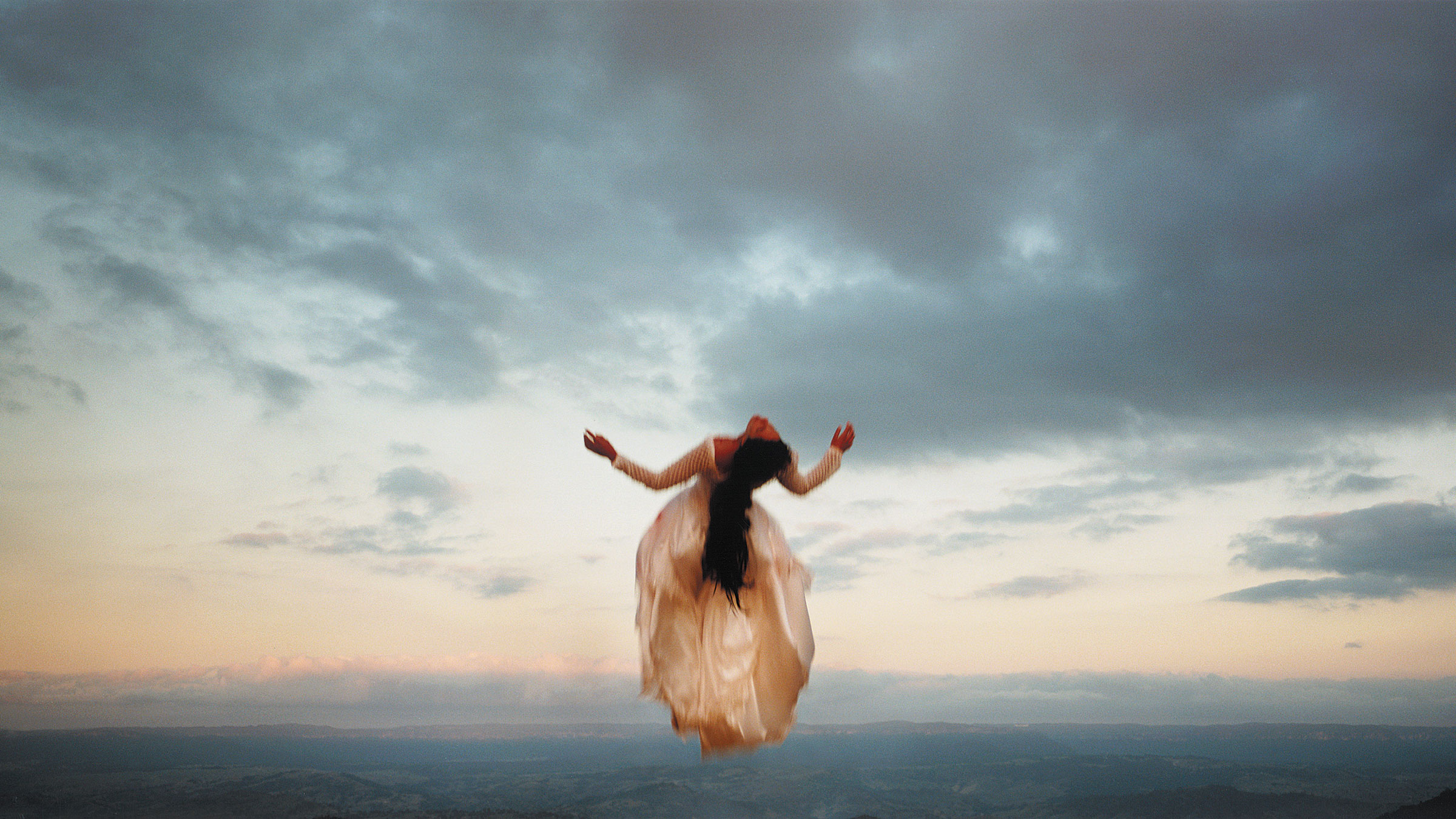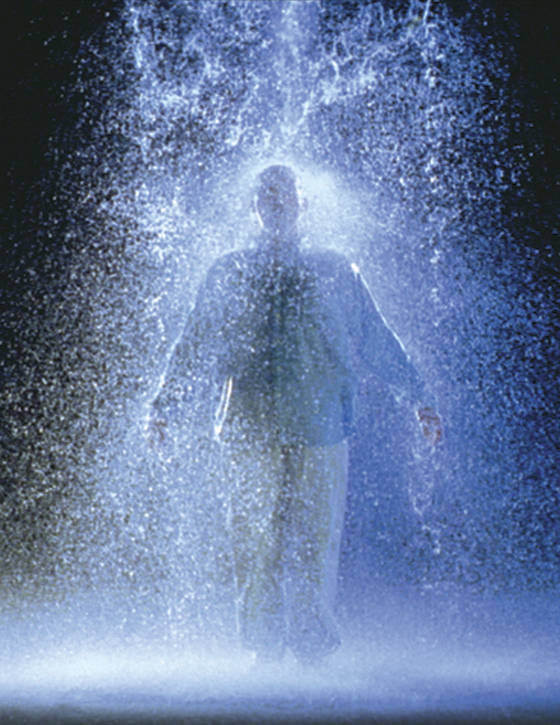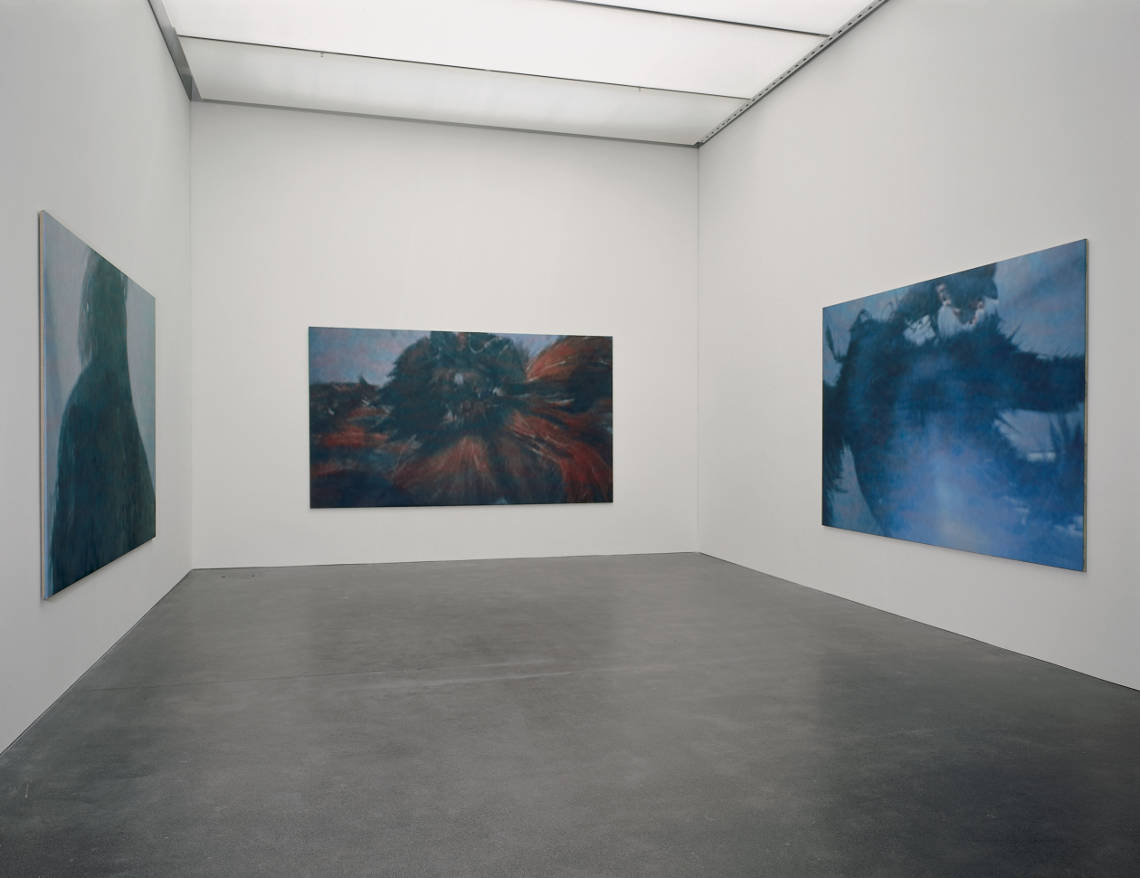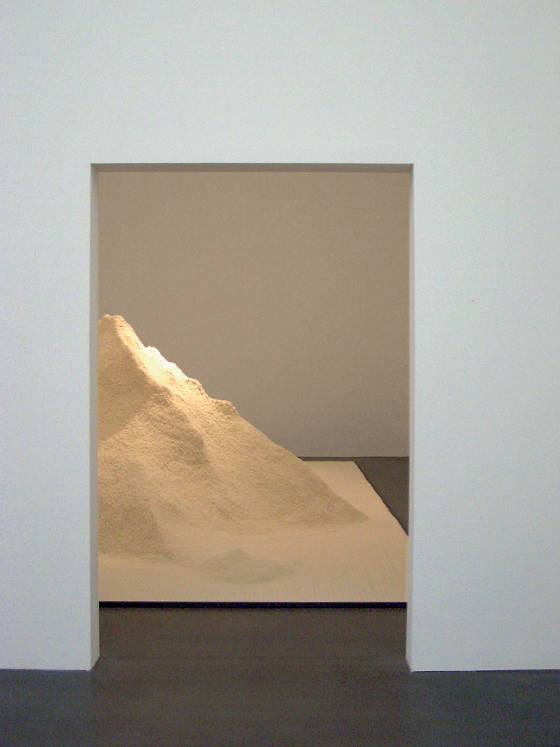a kind of magic
The Art of Transforming
With Agnes Martin, Dale Chihuly, Bill Viola, Kiki Smith, Rosemary Laing, Stefan Banz, Carsten Höller, Victorine Müller, Berni Searle, Lori Hersberger, Xie Nanxing, Nicoletta Stalder
Twelve artists of various generations from five continents have contributed to an overall experience of contemporary art. The exhibition deals with fire, earth, water and air, flying and diving, black Snow-Whites and Little Red Riding Hood with her wolves, mountains of rice, flower-carpets and glass magic, bridges that want to be crossed, and above all artists who work productively with opposites. To speak of the art of transforming, in the context of visual art, is actually a duplication, since with the deliberate use of media all art performs the act of transformation, of giving new form to some aspect of reality. Beyond this, many artists pursue a specific interest in transformatory phenomena. Their works influence our sense of reality, they open up passageways and new horizons, work with processes and cycles, in analogy with the cycles that determine and renew nature and life.
Human existence has an outside world and an inside world, it includes conscious and unconscious things, it is governed by the intellect and the emotions, by action and reflection. At the same time it is part of a larger whole that is determined, amongst other things, by the elements. These are materially present in the environment and the body, as principles in being and spirit. If an art work succeeds in placing these poles in relation to one another, in allowing the viewer to experience the interaction of the elements, moments of concentration, of transformation, of recognition come about – magic moments.
The museum, as an exhibition space, is a place of transformation per se. It communicates between art and the public, by linking art with everyday reality, or reflecting it, it gives the public a lasting experience, builds bridges and opens up new territories. The exhibition a kind of magic treads a path through contemporary art that will also be a path of individual experiences. This path begins with a new, temporary means of access to the Museum of Art via an emergency stair tower in front of the prominent façade of the Lucerne Culture and Conference Centre (KKL), Jean Nouvel’s architectural landmark for the city. Not least, it takes as its theme the isolated nature of the Museum of Art Lucerne, occupying the top storey of the multi-functional culture-machine that is the KKL, and sets out to allow visitors to the exhibition deliberately to experience the transitional zone where outer and inner space connect, and where a considerable difference in altitudes must be overcome.
The exhibition begins with the large spatial installation with the double projection The Crossing by the American video artist Bill Viola. In a captivatingly aesthetic pictorial language, the artist places the two opposing elements of fire and water on either side of a single canvas, and takes as his theme not only the destructive power but also the purifying power of natural forces and man’s longing to be connected with them. Next, Carsten Höller creates an experimental playground. For years he has engaged both scientifically and artistically with the mechanisms of human behaviour. In Lucerne, with his Flying Machine (1996) he fulfils the eternal dream of visitors to the exhibition of being able to fly, and gives them undreamed-of moments of joy. The South African artist and performer Berni Searle exhibits her own body as a bearer of identity and consciousness. In various photographic works she confronts its potential for change with our prejudices, while the impressive, ritualistic video performance Snow White (2002) speaks in a complex sense of individual and collective sensitivities, history and the present, suffering and productive activity.
The Swiss artist Stefan Banz then draws a link between the philosophies, as well as the topographies that help to influence them, of two different cultures. A gigantic rice sculpture forms one of the most striking four-thousand-metre peaks of the Alps, La Dent Blanche, placed in the space in the meditative setting of a Zen garden. With a persistence and meticulousness bordering on the obsessive, the Chinese painter Xie Nanxing tries to investigate the hidden truths in real objects. With three large-format canvases, the exhibition represents the whole of his production from 2004. The series of three paintings is the result of a lengthy artistic process that transforms the essence of a dead rooster into the most strangely wonderful paintings. The American artist Kiki Smith tells in twelve fragile paintings on glass of the archetypal and suspense-filled power within the fairy tale of Little Red Riding Hood. She gives the story an unexpected twist by allowing the gang of girls and the wolf-pack to make common cause.
The glass-blower, like an alchemist, is devoted to the taming and transformation of his element, and Dale Chihuly has revolutionised and perfected this art like few before him. In the spatial installation Mille Fiori that he has produced specially for Lucerne, all kinds of shapes and colours come together into a magical garden that could be said to compete with nature in terms of beauty. The performance artist Victorine Müller presents us with a powerful beast. The life-size, transparent copy of an elephant takes as its theme the object as a body in space, the body as a living-space, and the interpenetration of inside and outside. The contribution of the Australian artist Rosemary Laing, very well known in her home country, consists of two of her most impressive photographic series from 2001-2. They deal in a spectacular and also a gentle way with the land of Australia, its landscape and the interaction of culture and nature. Then Swiss artist Nicoletta Stalder will give a sense of what it is like when art and life, two supposedly divergent realities, are immediately linked with one another. Her video works deal with the cycle of nature, becoming and passing away, and the way in which the artist includes herself within the work. The oeuvre of the American artist Agnes Martin, who died recently at the age of 92, testifies to the constant power of painting to visualise the unseen. The exhibition honours her in a quiet homage with a series of eight meditative paintings, a mini-retrospective from the years 1960-1999. The neon work We’re gonna cross that bridge by Lori Hersberger will bring the exhibition to a striking conclusion and, with its extravagantly dramatic gesture, perhaps bring visitors to the exhibition back down to reality.
curated by Peter Fischer and Brigitt Bürgi



